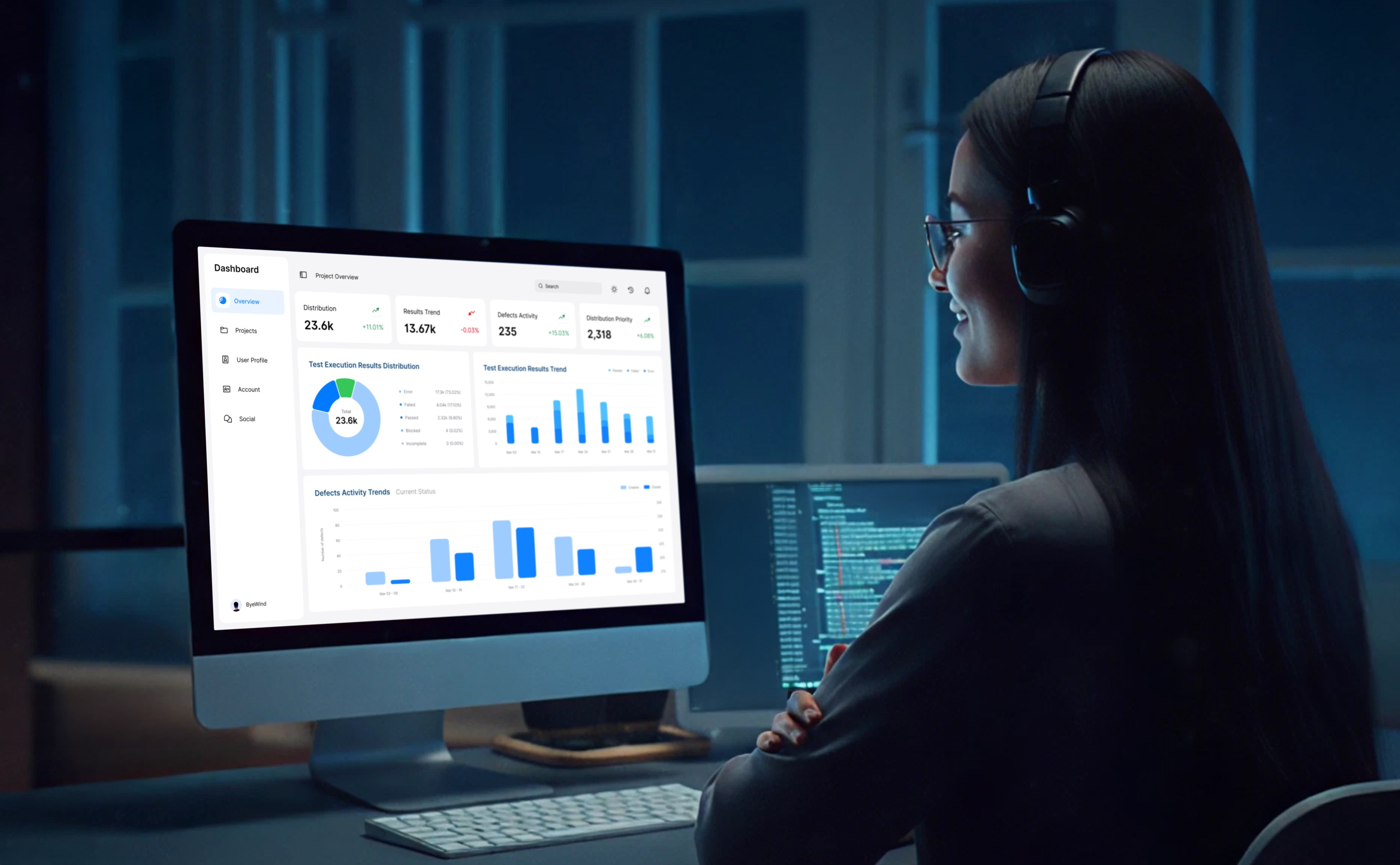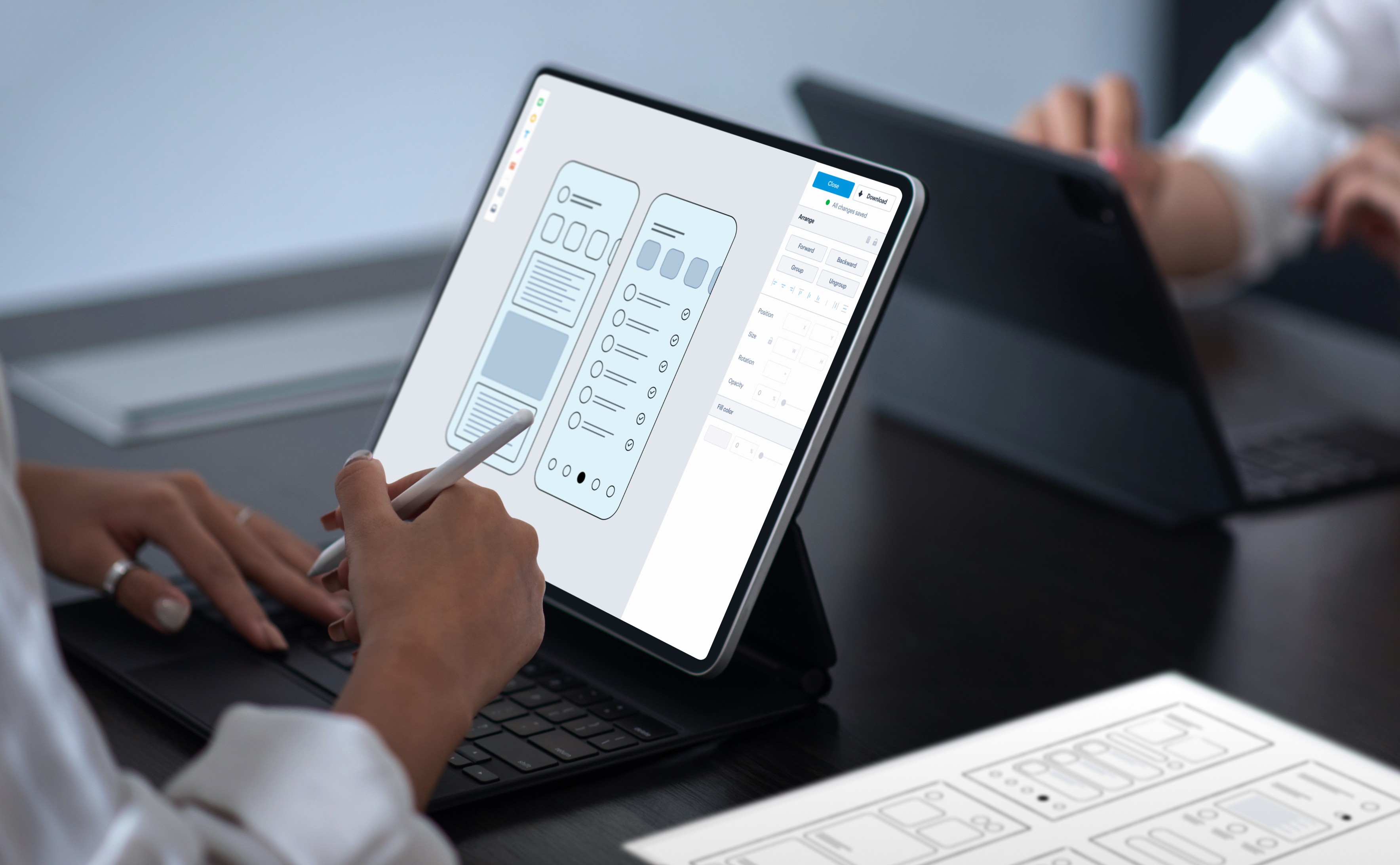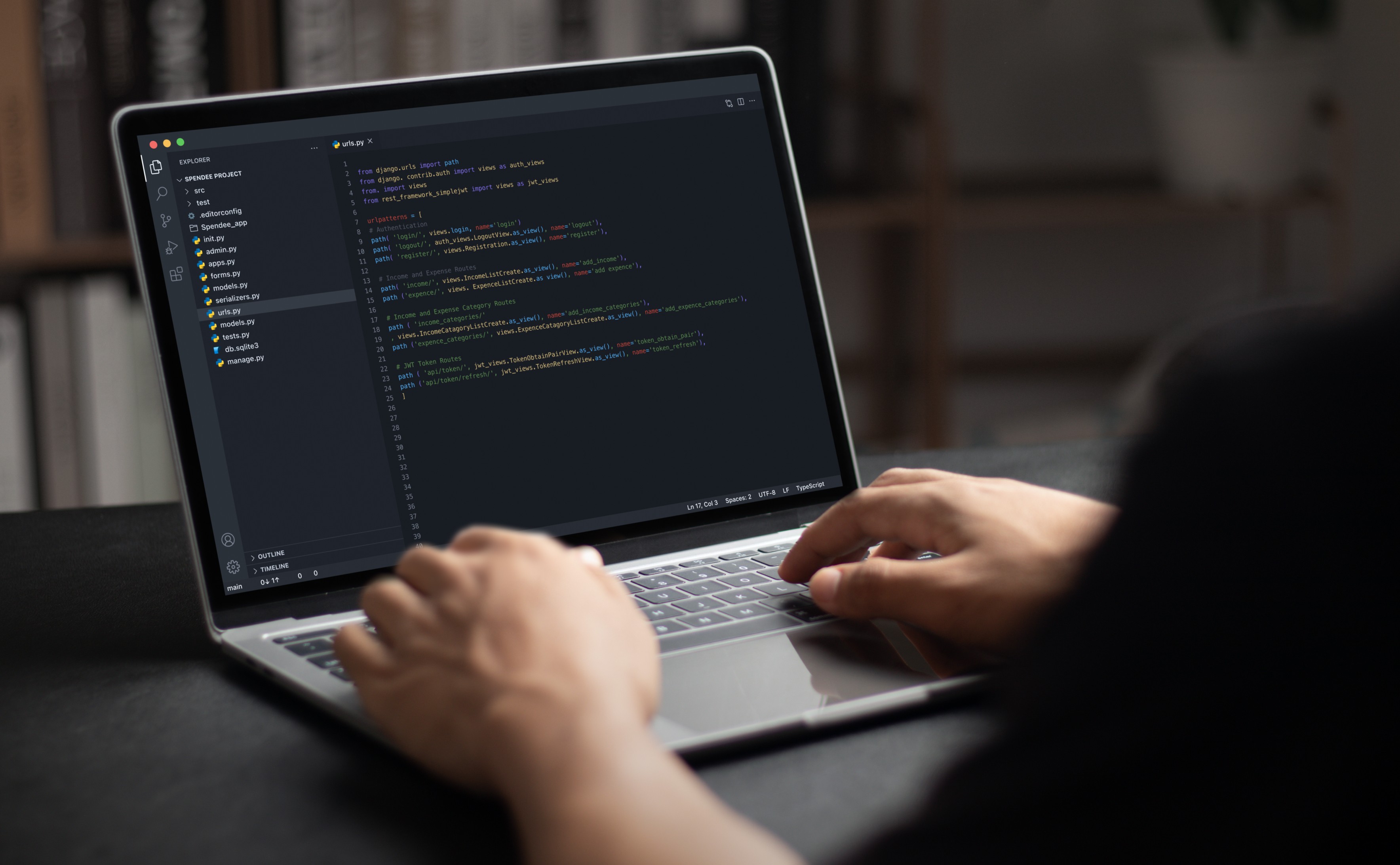How Much Does Android App Development Cost?

The demand for Android apps has taken off, fueled by our growing dependence on mobile solutions in various industries. Companies, whether they've just started or are well-established, have been witnessing the value that Android applications bring in boosting user engagement and increasing revenue. Statista projects that mobile app revenue worldwide will reach $613 billion by 2025, underscoring the role played by mobile applications in today's business models. However, one of the biggest questions on the minds of business owners today is: "How much does it cost to create an Android app?" Unfortunately, there is no simple solution here because development costs might vary greatly depending on various factors. This article presents a comprehensive discussion of the expenditures, the undercover costs, and the cost-optimisation techniques used for Android app development. Let’s dive in!
An Overview of the Average Mobile App Development Cost Estimate
The cost of creating an Android app can vary greatly depending on several major factors. These factors include the design, the proficiency of the development team, and the features you intend to add. It's worth mentioning that the Android app development cost in India is generally more optimized because there is competition in the market to provide competitive pricing. Though US/UK rates vary between $50 - $150+ per hour, Indian development companies generally charge between $20 - $50+ per hour.
A simple app with basic features like login, user profiles, and a dashboard costs around $16,000–$32,000. Medium-complexity apps with features like user engagement, monetization, social media integration, payments, and streaming typically cost $32,000–$48,000. Complex apps using advanced tech such as AR/VR, AI, machine learning, multi-language support, and detailed data logic start from $72,000.
Industry-specific app development costs are as follows:
| Sector | Estimated Development Cost Range |
|---|---|
| Medical & Healthcare | $10,000 – $70,000 |
| Learning & Education | $15,000 – $100,000 |
| E-commerce & Retail | $7,500 – $50,000 |
| Entertainment & Media | $5,000 – $70,000 |
| Social Networking Apps | $10,000 – $50,000 |
The overall cost of developing an app depends on the time spent in three main areas: designing the user interface and experience (UI/UX), building the app separately for each platform (like Android and iOS), and setting up the backend infrastructure, which powers the app's functions behind the scenes. These time estimates are then multiplied by the per-hour rate billed by the development team. This is a straightforward formula to use for estimating the overall investment involved in app development based on design complexity, platforms that it will be hosted on, and back-end requirements.
Total App Development Cost = (UI/UX Design Time + Platform-Specific Development Time + Backend Development Time) × Developer Hourly Rate
Key Factors Affecting Android App Development Cost
Android app development is a complex process defined by many technical and strategic factors. The total expense isn't defined by development but by various factors — from app features and third-party integrations to UI/UX complexity and team composition. Listed below are the main technical drivers that impact Android app development expenses:
1. App Complexity
The overall architecture and logic flow of the app greatly affect development time and budget. A basic app with static content, minimal user input, and no backend interaction is quicker and cheaper to build. In contrast, a complex app might include multi-tiered databases, role-based user access, advanced data encryption, and synchronization across devices, requiring more advanced coding, testing, and maintenance.
| App Complexity | Estimated Cost | Development Time |
|---|---|---|
| Simple App (basic UI, no backend, minimal features) | $5,000 - $15,000+ | 2-4 months |
| Moderate Complexity App (database, APIs, third-party services) | $15,000 - $50,000+ | 4-8 months |
| Complex App (AI/ML, real-time sync, advanced security) | $100,000 - $300,000+ | 8+ months |
**The prices mentioned above are for reference and are subject to change.
2. App Features and Functionalities
With every added feature, particularly those demanding real-time computation or data transactions, the development complexity increases. Modules like user login, AI chatbots, real-time GPS, or AR/VR elements need customized SDKs, APIs, and security measures.
| Feature | Estimated Cost |
|---|---|
| User Authentication (Google, Facebook, OTP) | $2,000 - $4,000 |
| Payment Gateway (PayPal, Stripe, Razorpay) | $5,000 - $10,000 |
| Push Notifications | $1,500 - $3,500 |
| AI Chatbot Integration | $8,000 - $15,000 |
| Real-time GPS Tracking | $10,000 - $25,000 |
| AR/VR Features | $20,000 - $50,000 |
**The prices mentioned above are for reference and are subject to change.
3. Type of App
While native Android applications are designed specifically for Android devices, they take full advantage of the hardware and operating system and hence, usually run smoother and faster. However, in the majority of cases, the process is more intensive, time-consuming, and resource-demanding. On the contrary, cross-platform apps—those made for both iOS and Android—are comparatively less expensive, but they may sacrifice design accuracy and performance. Also, hybrid apps are the most cost-effective because they are based on web technologies, and they do not fully utilise the device's inherent capabilities.
| App Type | Estimated Cost | Pros | Cons |
|---|---|---|---|
| Native App (Android only) | $40,000 - $150,000+ | High performance, better UX | Expensive, longer development |
| Cross-Platform App (Android & iOS) | $25,000 - $100,000+ | Faster & cost-effective | Slightly lower performance |
| Hybrid App (Web-based using frameworks like Flutter/React Native) | $20,000 - $80,000+ | Single codebase, faster updates | Limited native functionality |
**The prices mentioned above are for reference and are subject to change.
4. App Design (UI/UX)
A well-designed app is beyond just aesthetics. It helps users find what they need quickly, which boosts engagement and even improves conversion rates. Simple apps tend to employ platform-standard elements and Material Design guidelines with little tailoring, and development is quicker and cheaper.
Advanced apps employ UI kits, typography, color, icon sets, and interaction flows in line with brand voice. It involves more UX research, prototyping, and documentation of design systems. Designers generally use tools like Figma or Adobe XD to create interactive mockups, test ideas, and get feedback before any coding. These added steps not only make a superior product but also increase cost and development time.
| Design Complexity | Estimated Cost |
|---|---|
| Basic UI (Standard Components) | $3,000 - $10,000+ |
| Custom UI/UX (Unique elements, animations) | $10,000 - $30,000+ |
| High-End UI (3D graphics, motion design) | $30,000 - $50,000+ |
**The prices mentioned above are for reference and are subject to change.
5. App Categories & Cost Estimates
App category directly determines development cost by defining system architecture, integrations, and performance requirements.
E-Commerce apps need complex backend logic for catalog syncing, stock management, cart logic, user sessions, and secure payment gateways (e.g., Stripe, Razorpay). Real-time updates, AI-driven product suggestions, and analytics engines add to compute demands. PCI DSS compliance and concurrency handling drive up infrastructure costs.
Social networking apps rely on WebSockets for real-time messaging, media compression tools for uploads, and scalable CDNs for high-volume content delivery. Features such as content moderation, AI-driven feed ranking, and tracking user behavior all depend on custom APIs and machine learning models. The backend needs to handle millions of active users and store data on a petabyte scale.
On-demand applications require a dual-panel setup (think user/provider), real-time geolocation, route optimization algorithms, and dynamic pricing models. To keep everything in sync and ensure low-latency updates, you'll need schedulers, dispatch engines, and event-driven systems.
When it comes to healthcare apps, they must have encrypted storage for health records, live video streaming capabilities, and device integration through Bluetooth or APIs.
When you're talking about gaming apps, there needs to be quick rendering engines. To make multiplayer games run right, there should also be robust server logic and real-time matchmaking logic. And if you're entering AR or VR, you'll have to optimize 3D content, sensor fusion, and spatial mapping as well.
| App Category | Estimated Cost |
|---|---|
| eCommerce App (Amazon-like marketplace) | $50,000 - $150,000+ |
| Social Media App (Instagram, TikTok clone) | $60,000 - $200,000+ |
| On-Demand Service App (Uber, Zomato clone) | $70,000 - $180,000+ |
| Healthcare App (Telemedicine, Health tracking) | $40,000 - $120,000+ |
| Gaming App (2D/3D, multiplayer) | $50,000 - $500,000+ |
**The prices mentioned above are for reference and are subject to change.
6. Development Team Location & Size
Development costs are directly influenced by regional labor rates and team structure. In places like the U.S., U.K., and Canada, Android developers typically charge anywhere from $50 to $150 an hour, largely due to high operational expenses and the strong demand for experienced professionals. On the other hand, developers in Eastern Europe, particularly in countries like Poland and Ukraine, are more affordable at a $30 to $70 per hour rate. Meanwhile, in India, seasoned full-stack and backend developers usually charge between $20 and $50, while frontend specialists and QA testers in Vietnam and the Philippines usually charge between $15 and $40 per hour.
A complete Android development team includes a project manager, UI/UX designer, Android developer, backend engineer, and QA tester. A five-member team working concurrently reduces development time but raises total cost due to parallel billing. A lean team or solo developer can cut expenses by 30–50%, but risks include delayed timelines, bottlenecks in feature deployment, and inconsistent codebase or interface quality.
| Region | Hourly Rate |
|---|---|
| USA/UK | $50 - $150+ |
| Eastern Europe (Ukraine, Poland) | $30 - $70+ |
| India | $20 - $50+ |
| Philippines/Vietnam | $15 - $40+ |
**The prices mentioned above are for reference and are subject to change.
7. API Integrations
Third-party API integration is common in Android app development since it provides access to external functionality like analytics, cloud storage, payments, and maps. APIs save development time and enhance the user experience, but are accompanied by implementation and maintenance costs.
API integrations' total cost depends on technical complexity, customization requirements, and security needs for the data. Most APIs also have additional costs based on usage, storage, or data transfer, leading to long-term operating expenses.
| API Integration | Estimated Cost |
|---|---|
| Google Maps API | $2,000 - $5,000 |
| Payment API (Stripe, PayPal) | $5,000 - $10,000 |
| Cloud Storage (AWS, Firebase) | $3,000 - $8,000 |
| Analytics (Google Analytics, Mixpanel) | $1,500 - $5,000 |
**The prices mentioned above are for reference and are subject to change.
Wondering how much your Android app will cost?
Let’s find out!Loading...
How to Cut Android App Development Costs
Companies need to be strategic if they want to make a great Android app without breaking the bank. Here are a few practical ways to reduce development expenses without compromising functionality or performance:
1. Develop a Product Requirement Document (PRD)
A Product Requirement Document (PRD) is a roadmap for your Android application. It describes critical features, functionality, target users, user flow, and technical requirements. A well-organized PRD reduces confusion, avoids scope creep, and avoids expensive revisions. Developers can use this document to guide them and remain on course, allowing for effective resource allocation and minimizing unnecessary costs.
2. Prioritize Features Thoughtfully
Not all features need to be rolled out initially. By concentrating on the essential functionalities instead of the fancy extras, you can keep start-up costs in check. A smart way to make the most of your resources is to roll things out in stages, starting with the most important features and then improving them in response to user input.
3. Create an MVP
Creating a Minimum Viable Product (MVP) is a cost-effective way for companies to test their app ideas in the market before diving into full-scale development. An MVP focuses on the essential features, allowing for early user feedback that can help refine the concept. This approach enables businesses to alter their product according to actual data, reducing the risk of investing money and effort into the features and functions that may not be required.
4. Select Android App Development Services Carefully
When cost is concerned, choosing the right Android application development services is key. Being associated with a skilled Android app development company can make all the difference, ensuring that your project sails through, adopting efficient coding strategies, and strictly following the highest standards of the industry. A skilled development team can tap into existing modules, frameworks, and automation tools to speed up the development process while keeping expenses in check.
5. Selecting the Correct Development Team
When it comes to developing an Android app, your geographic location and the expertise of your development team play a huge role in determining costs. Having a full-time team can be quite pricey since it involves salaries, benefits, and other overhead expenses. Conversely, outsourcing to India, Eastern Europe, or Southeast Asia can create savings of 50% to 70% in development expenses while maintaining the quality. Just remember that it is important to thoroughly screen developers so that they possess the necessary skills and expertise to provide a top-notch product.
If these strategies are adopted, companies can cut down their Android app development costs greatly while developing a high-performing and scalable application.
Conclusion
Creating an Android app entails several cost elements, such as app complexity, feature set, UI/UX design, API integrations, and location of the development team. There are usually some hidden expenses to account for, including hosting, maintenance, security patches, and third-party services, all of which can affect your bottom line. Knowing these things, companies can budget better and steer clear of any surprise costs.
Having an accurate budget and selecting the proper development team are fundamental steps to guarantee a cost-effective and sleek development process. By focusing on must-have features and making smart resource decisions, companies can reap the most benefits within their budget. Before diving into development, it's a good idea to take a step back and assess your personal needs, future aspirations, and how scalable your project needs to be. This way, you can make informed and thoughtful decisions.
At WAC, we provide tailored Android application development services that fit your business needs. Our experts are dedicated to developing high-quality, scalable, and secure apps at affordable prices. Contact us today to discuss your project!
Need a Custom Estimate for Your Android App Project?
Reach out to usLoading...
Discover Digital Transformation
Please feel free to share your thoughts and we can discuss it over a cup of tea.










